
Below you will find a collection of fact sheets, content essays, and stories from our explorers on board cold seeps expeditions featured on the OceanExplorer.NOAA.gov website.
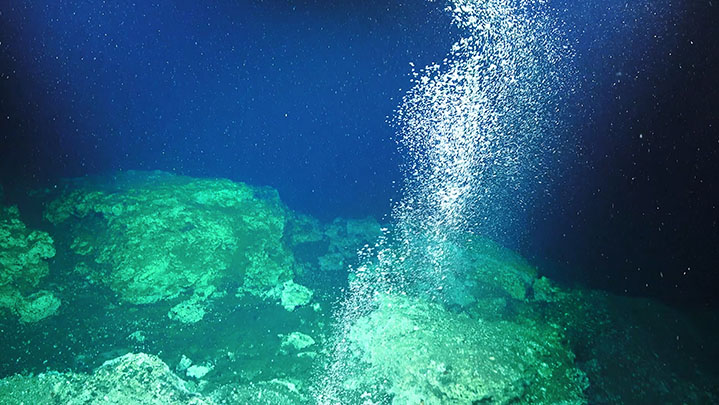
Fact Sheet. Cold seeps are places throughout the global ocean where chemicals like hydrogen sulfide, methane, and other hydrocarbon-rich fluids and/or gases escape from cracks or fissures in the ocean floor. At these seep sites, the escaping fluid or gas is most often found to have temperatures close to that of the surrounding seawater differentiating them from the super-heated fluids released from hydrothermal vents.
Read more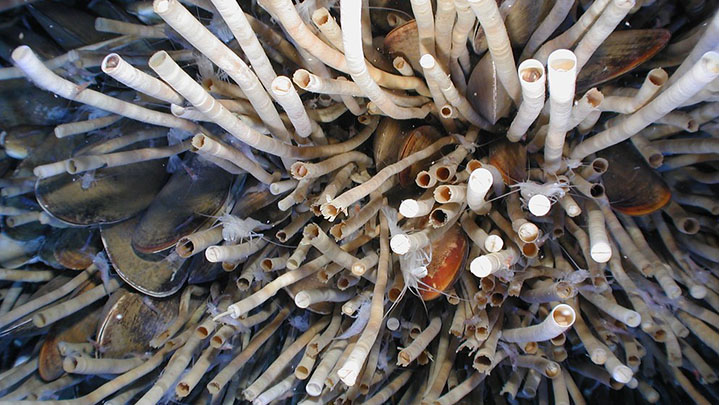
Fact Sheet. The chemical compounds that emerge from cold seeps create a toxic environment in the surrounding waters. Yet, ocean explorers regularly observe dense and complex biological communities at seep sites. Different organisms arrive in phases, through a process known as ecological succession in which the community composition shifts from one set of species to another over time.
Read more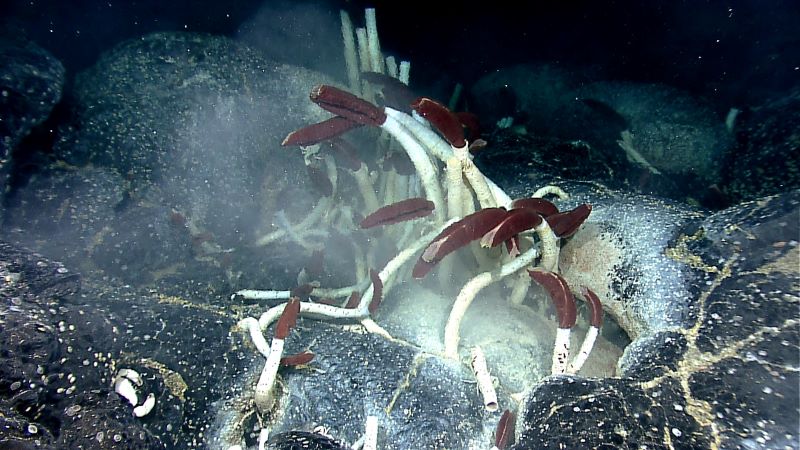
Fact Sheet: Photosynthesis is possible in any ecosystem that gets sufficient sunlight–on land, in shallow water, even inside and below clear ice. In the deep ocean, however, there is no light. Here, instead of sunlight being the primary form of energy, chemical energy is used in a process called chemosynthesis.
Read more
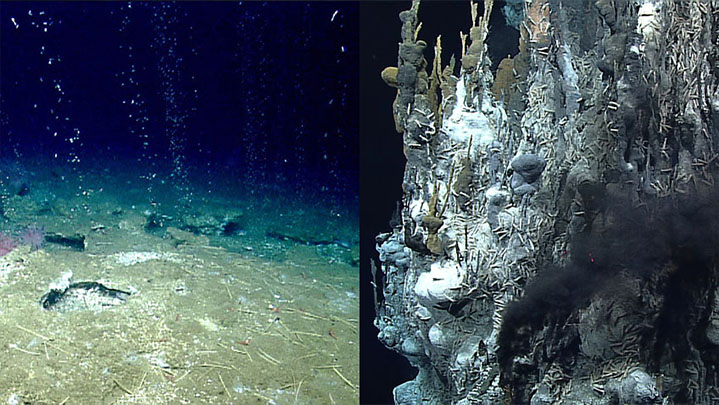
Ocean Exploration Fact. Cold seeps and hydrothermal vents are similar in that the ecosystems they support are largely driven by a process called chemosynthesis, the synthesis of organic compounds by bacteria or other living organisms using energy derived from reactions involving inorganic chemicals, typically in the absence of sunlight.
Read more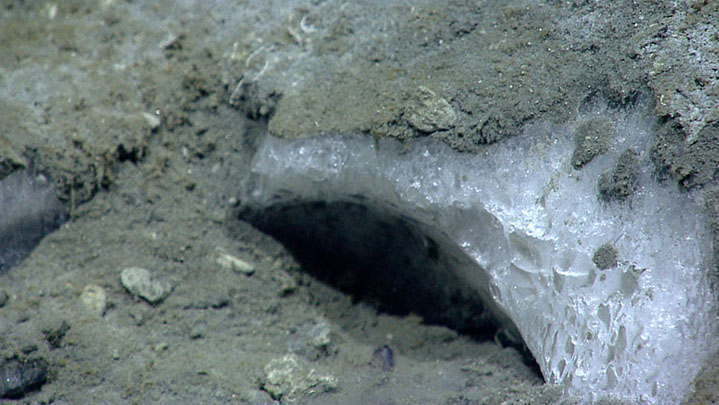
Ocean Exploration Fact.Gas hydrates are ice-like crystalline structures that form when a low-density gas, like methane, ethane, or carbon dioxide, combines but does not chemically bond with water and freezes into a solid under low temperature and moderate pressure conditions.
Read more
On July 12, 2019, the 100th NOAA Ship Okeanos Explorer mission visited new methane plumes where the U.S. Atlantic seeps story began.
Read more
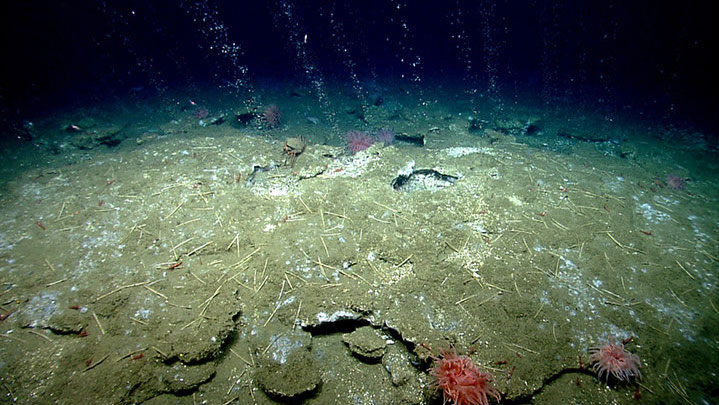
Cold seeps occur where highly saline and hydrocarbon-rich fluids, such as methane and sulfides, escape from the seafloor at close to ambient temperatures. Cold seeps are an important component of deep-sea ecosystems because they often fuel entire communities that rely upon bacteria that convert chemicals (e.g., hydrocarbons) to food through a process called chemosynthesis.
Read more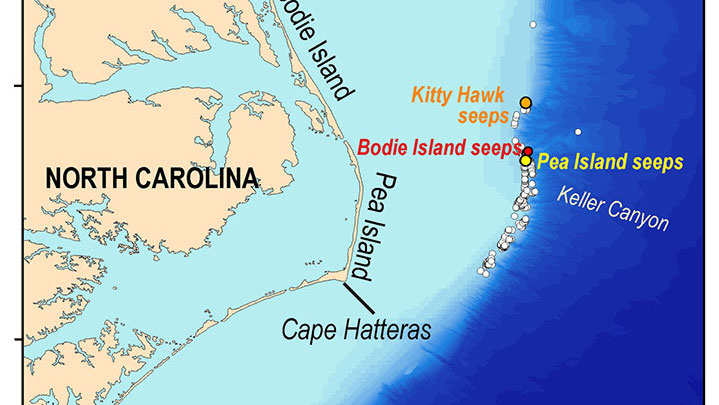
NOAA’s remotely operated vehicle (ROV) Deep Discoverer, explored cold seeps along a ridge about 62 kilometers (39 miles) offshore Bodie Island, North Carolina. These methane seeps had never before been visited and scientists were excited to make new discoveries here.
Read more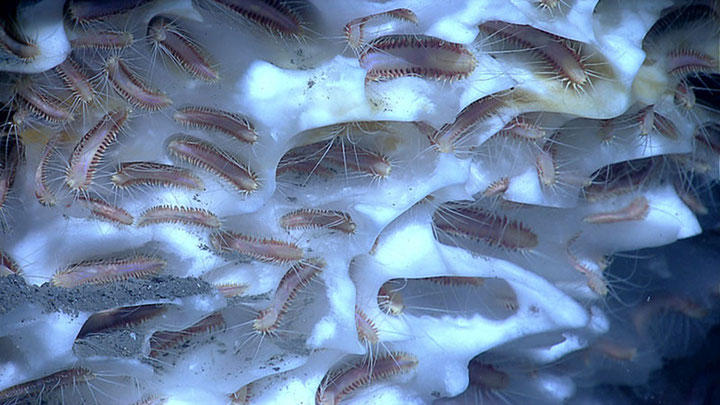
From the Gulf of Mexico 2017 expedition. Cold seeps are unique because they have a plentiful and readily available food source (bacteria), so animals living on seeps can grow to large sizes rapidly and reproduce quickly, unlike in the rest of the deep sea which is very food limited. In this essay, learn more about the communities that live near cold seeps in the Gulf of Mexico.
Read more
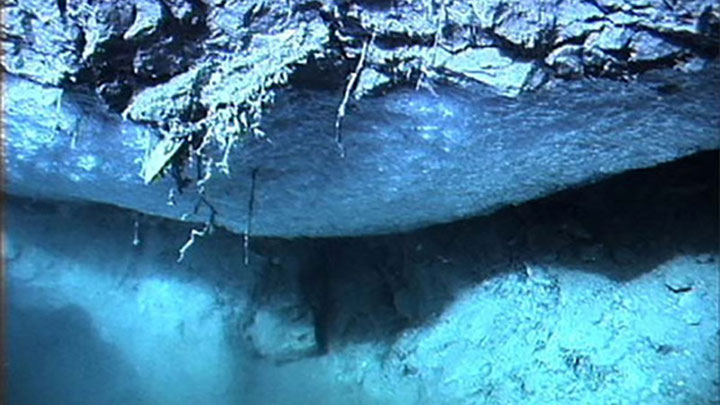
From the Northeast U.S. Canyons Expedition 2013 expedition. The continental shelf and slope off the northeastern United States hosts an incredible diversity of habitats including approximately 70 submarine canyons. These canyons remain little explored but the topography, currents, and sedimentation in and around these submarine canyons support complex systems including chemosynthetic ecosystems in the form of cold seeps.
Read more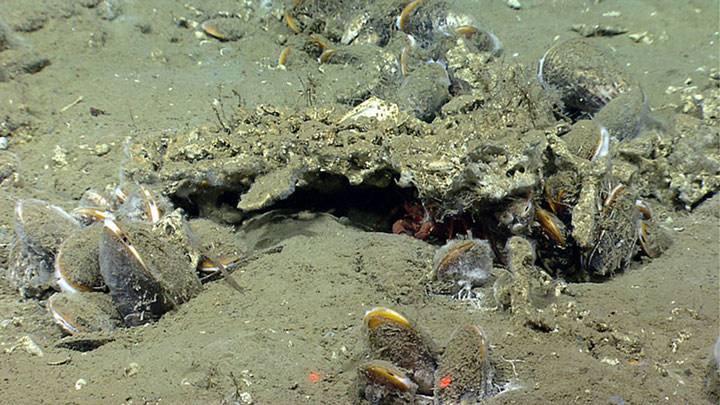
From the Northeast U.S. Canyons Expedition 2013 expedition. On July 11 and July 12, 2013, NOAA Ship Okeanos Explorer and the Deep Discoverer remotely operated vehicle targeted seafloor sites located about 165 kilometers south of the island of Nantucket. These dives were the first scientific explorations of newly discovered seeps.
Read more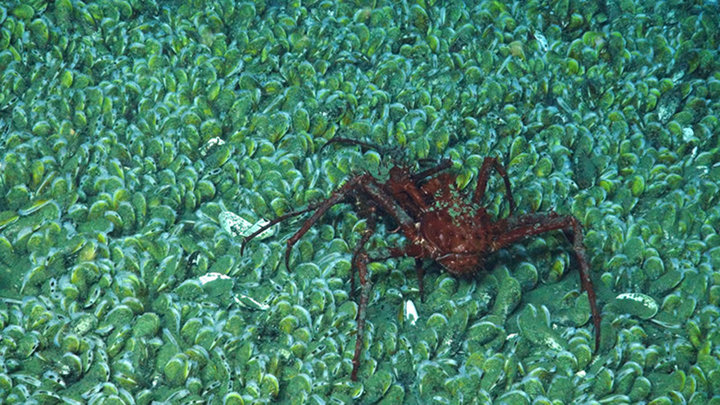
From the Deepwater Canyons 2013 - Pathways to the Abyss expedition. During this expedition, the team found a patch of live mussels, confirming the suspicions of scientists on the Okeanos Explorer the previous year. The team also found a brand new seep site, one of the very few known off the U.S. Atlantic coast at the time.
Read more
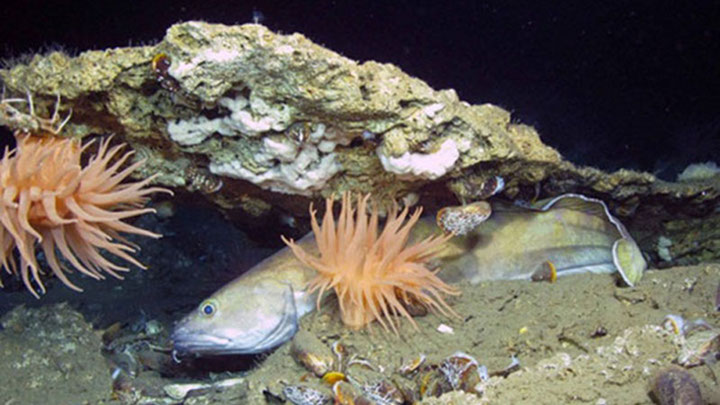
From the Deepwater Canyons 2012 expedition. During this expedition, scientists located a cold seep site first discovered in the 1980s. The Baltimore Canyon seep site covers a considerable area, and at 400-430 meters, it is also very shallow compared to the Blake Ridge (2,000-3,000 meters depth) seep site.
Read more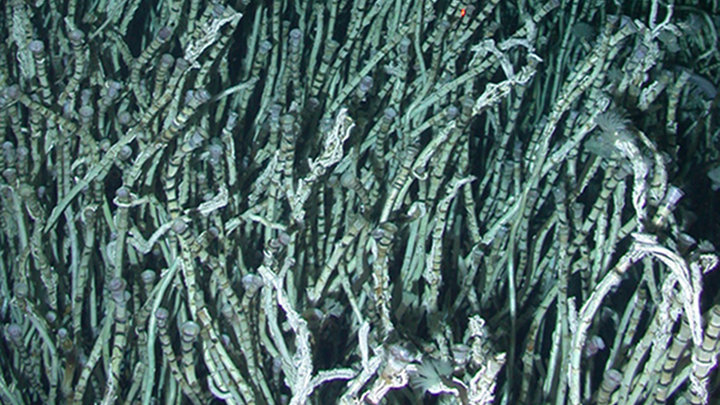
From the INSPIRE: Chile Margin 2010 expedition. At the Concepcion methane seep area off Chile, the diverse habitats provided by the methane seep has resulted in incredibly high diversity, in part because it attracts animals from surrounding habitats. Early exploration of recently discovered seeps off Chile suggests the Chile margin represents an entirely novel biogeographic province — an area with almost all species new to science.
Read more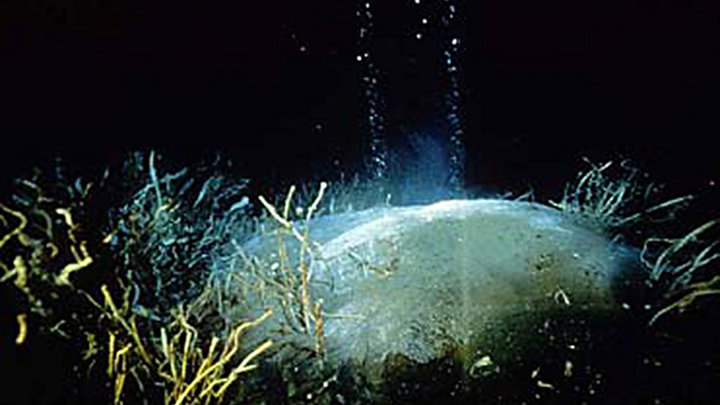
From the INSPIRE: Chile Margin 2010 expedition. Methane is produced in two primary ways in the ocean, thermogenically and biogenically. Thermogenic methane is produced deep within the seafloor when organic material is degraded by the Earth’s heat. Biogenic methane is produced as a waste product when microorganisms called methanogenic archaea eat organic material.
Read more
The above items are only a selection of the educational materials highlighting cold seeps on our website.
View More